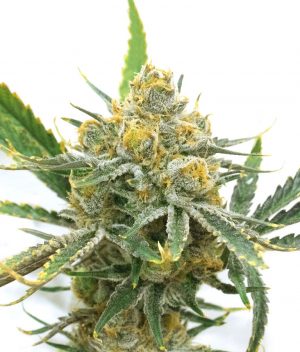All Cannabis Seeds
For cannabis enthusiasts, there is always a great deal of interest in what are the different kinds of cannabis seeds and how do they differ from each other. Like any other plant, the cannabis plant starts as a seed, and that seed dictates the quality and characteristics of the plant produced, including its THC and CBD content. Therefore, it is said to be important to choose the right type of cannabis seeds for the intended purpose.
Here is a comprehensive guide to the different types of cannabis seeds.
Showing 1–24 of 154 results
-
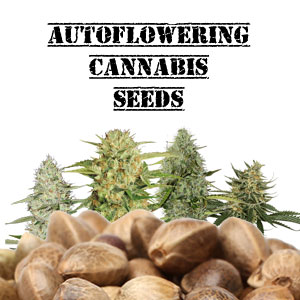
Autoflowering Cannabis Seeds (31)
-
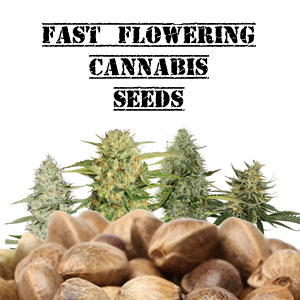
Fast Flowering Cannabis Seeds (3)
-
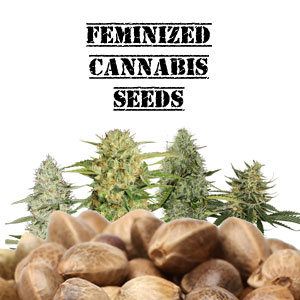
Feminized Cannabis Seeds (123)
-
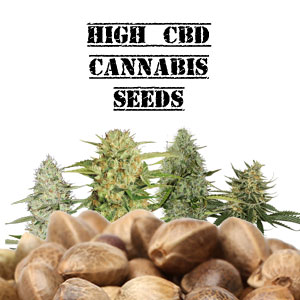
High CBD Seeds (12)
-
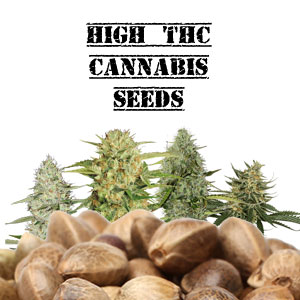
High THC Cannabis Seeds (49)
-
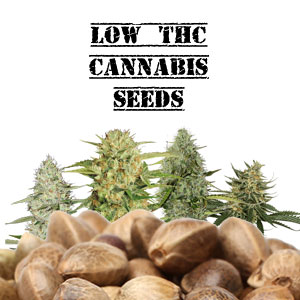
Low THC Cannabis Seeds (5)
-
All Cannabis Seeds, Feminized Cannabis Seeds, High THC Cannabis Seeds
$125.23 – $350.67
$112.71 – $315.60 Select options -
All Cannabis Seeds, Feminized Cannabis Seeds, High THC Cannabis Seeds
$125.23 – $350.67
$112.71 – $315.60 Select options -
All Cannabis Seeds, Feminized Cannabis Seeds, High THC Cannabis Seeds
$125.23 – $350.67
$112.71 – $315.60 Select options -
All Cannabis Seeds, Feminized Cannabis Seeds, High THC Cannabis Seeds
$125.23 – $350.67
$112.71 – $315.60 Select options -
All Cannabis Seeds, Feminized Cannabis Seeds, High THC Cannabis Seeds
$125.23 – $350.67
$112.71 – $315.60 Select options -
All Cannabis Seeds, Feminized Cannabis Seeds, High THC Cannabis Seeds
$125.23 – $350.67
$112.71 – $315.60 Select options -
All Cannabis Seeds, Autoflowering Cannabis Seeds, High THC Cannabis Seeds
$125.23 – $350.67
$112.71 – $315.60 Select options -
All Cannabis Seeds, Feminized Cannabis Seeds, High THC Cannabis Seeds
$125.23 – $350.67
$112.71 – $315.60 Select options -
All Cannabis Seeds, Feminized Cannabis Seeds, High THC Cannabis Seeds
$125.23 – $350.67
$112.71 – $315.60 Select options
Showing 1–24 of 154 results
Types of Cannabis Seeds
There are five main different types of cannabis seeds, each with unique qualities and benefits. They include:
Feminized Seeds
Feminized seeds are known to produce plants with large, potent buds. Cannabis plants grown from feminized cannabis seeds are more potent because they focus most of their energy on producing buds rather than reproducing.
Feminized cannabis seeds are typically produced when a female cannabis plant produces male flowers. Growers achieve this through rodelization or by spraying the grow site with colloidal silver, which induces a chemical change in female cannabis plants that causes the plants to produce male flowers with viable pollen.
This pollen is then used to fertilize other female plants, which eventually leads to the production of all-female offspring.
Pros
● They produce higher yields
● They entail an easier cultivation process since there is no need for gender identification.
● Feminized seeds are genetically similar, thus leading to consistency in quality
Cons
● Feminized seeds are generally costlier than regular seeds.
● Feminized seeds are more prone to developing plants with hermaphroditic traits, which can lead to lower-quality buds and reduced yields.
● They have limited genetic diversity
Autoflowering Seeds
Unlike regular photoperiodic plants, autoflowering cannabis plants produce flowers when they reach a certain stage in their maturity, usually about 10 weeks after germination.
Most autoflowering seeds are produced by crossing regular strains like indica and sativa with ruderalis strains. Ruderalis is the less-known cannabis strain (the other two being sativa and indica) that typically grows closer to the North and South Pole. Due to the lack of sunlight in the strain’s native regions, cannabis ruderalis strains do not depend on sunlight to complete their lifecycle.
Pros
● They have a faster life cycle. Autoflowering strains reach maturity in the same amount of time it takes for regular photoperiod strains to flower.
● They are reportedly perfect for discreet growing since they don’t require sunlight.
● Autoflowering seeds produce plants with a higher CBD percentage
Cons
● Autoflowering seeds produce plants with lower yields compared to regular and feminized seeds.
● They don’t produce high-quality clones since autoflowering clones inherit the mother plant’s genetics, even their age. This means that an autoflowering clone collected at two weeks old from the mother plant only has five to six weeks to reach maturity, resulting in underdeveloped plants.
Fast-flowering Cannabis Seeds
Fast-flowering cannabis seeds mature and flower significantly quicker than regular photoperiodic strains, with some plants flowering in seven weeks or less. However, they come with a few drawbacks.
For instance, most of these seeds are from indica strains, which means they don’t produce large plants but small compact ones with limited yields. In some cases, the THC and CBD content in cannabis plants produced from fast-flowering seeds is also significantly lower than from regular cannabis plants.
Pros
● They have a fast cultivation time, usually in a few weeks.
● They reportedly allow for increased discretion since the plants don’t grow tall enough to attract attention.
● They possess enhanced breeding capabilities since the plants mature faster, enabling legal growers to stabilize the strain through further breeding.
Cons
● They have reduced yield potential.
● They have lower potency.
● They have limited vegetative growth.
High-CBD Cannabis Seeds
High-CBD cannabis seeds usually produce plants with higher-than-average CBD concentrations of 4% and above. Some seeds also produce plants with a CBD content of up to 15%. This is usually in combination with other cannabinoids like THC. That said, some seeds are specially bred to produce plants with very low THC levels, resulting in plants with limited psychoactive effects when consumed.
These seeds come in various strains and have relatively similar growth requirements and cultivation times as regular cannabis seeds. Therefore, choosing high-CBD seeds is more of a personal choice than a means to overcome growth constraints.
Pros
● They produce plants with significantly higher CBD concentrations with limited THC.
● High-CBD seeds produce plants with more therapeutic benefits due to an abundance of CBD.
● High-CBD strains, especially those producing hemp plants, are more legally accessible since CBD is legal in most states across the U.S.
Cons
● Plants produced from high-CBD strains may have limited psychoactive effects.
● High-CBD strains don’t offer additional growth and cultivation benefits over regular strains.
High-THC Cannabis Seeds
High-THC cannabis seeds are basically seeds that grow into plants with high THC content, usually above 15%. It is worth noting that the seeds themselves don’t contain high THC levels but, rather, the plants they grow into.
These seeds are typically produced by breeding two high-THC strains. Growers may repeat this process by continuously breeding the offspring with other high-THC strains until they get plants with desired characteristics. The resulting plants may also have higher than average CBD concentrations for balanced effects, but some growers prefer strains that produce high THC and low CBD for an overwhelming psychoactive high.
Pros
● They produce plants with a high THC content.
● They can be bred to produce equally high CBD concentrations for more balanced effects.
● They typically grow like regular cannabis strains, thereby not affecting their yield.
Cons
● They require extensive care and maintenance during cultivation
● They may require additional appliances like humidifiers and temperature monitoring and control systems to ensure higher yields.
Low-THC Cannabis Seeds
Like high THC and CBD strains, some legal growers prefer cultivating low-THC strains. Low-THC cannabis seeds are produced by breeding two low-THC strains to produce offspring with an even lower THC concentration. These seeds typically produce plants with less than 10% THC concentration, but some go as low as 1%.
Additionally, low-THC cannabis strains tend to have higher concentrations of CBD, with most plants containing higher than 4% CBD. As hybrid strains, low-THC cannabis strains may require specialized growing conditions and cultivation practices to ensure quality and high yields.
That said, the specific growth requirements depend on the strain in question. As such, low-THC cannabis strains can come in the form of autoflowering or typical photoperiodic strains, although the former is much harder to come by.
Pros
● They have limited psychoactive effects when plants are consumed.
● They can come in both autoflowering and photoperiodic forms, enabling growers to choose the best fit based on what they’re working with.
● The plants produced from low-THC cannabis seeds have a higher CBD content, leading to more therapeutic benefits.
Cons
● There’s limited cannabinoid content in the plants produced owing to lower THC content.
● They have limited strain variety. Unlike typical high and average THC strains, low-THC seeds often have a more limited strain variety available. This is because high-THC strains are more popular, causing breeders to focus less on producing the not-as-popular low-THC strains.
What to Consider When Choosing Cannabis Seeds
Quality
It’s quite difficult to determine the quality of cannabis seeds just by looking at them, but it’s not impossible. For instance, immature seeds tend to be small, shriveled, and brittle. They are also light green or gray. Similarly, old seeds are typically dry and cracked. Immature and old seeds are said to have a very low success rate for germination, so it’s said to be better to avoid them.
Healthy cannabis seeds are typically dark brown and have a glossy finish. They are also free from cracks and should feel very firm when pressed between two fingers.
Origin
To increase the chances of buying good quality seeds, it’s advisable to buy cannabis seeds only from reputable vendors. That said, a quick look at the vendor’s reviews is enough to gather information on what to expect from the seeds.
Do They Float?
Checking whether cannabis seeds float in water can be a good indication of quality. In most cases, seeds that sink in water are reportedly more likely to germinate and produce high-quality plants than seeds that sink.
The Bottom Line
There are two ways to get high-quality cannabis seeds: legally growing them or buying from a reputable vendor. The former is the most effective way to get high-quality seeds, but that requires tremendous effort. That said, numerous vendors offer high-quality cannabis seeds, but it’s important to know where to find them and how to verify the quality of their seeds.
Frequently Asked Questions
What kind of cannabis seeds are best?
It all comes down to personal preferences and where they will be legally grown. Regular cannabis seeds can grow almost anywhere but may not offer the best yields. Conversely, feminized seeds are said to offer the best yields, while autoflowering seeds require the least effort to produce mature plants.
Which cannabis seeds take the least time to grow?
Depending on the strain, cannabis can take anywhere from 10-32 weeks to three to eight months to reach maturity. That said, plants germinating from autoflowering cannabis seeds take the least amount of time to grow.
How long do cannabis seeds stay viable?
Depending on how they are stored, cannabis seeds can stay viable for a few months to a decade. The best way to store cannabis seeds is by keeping them refrigerated in a cool, dry place.


